17. The Jailoo

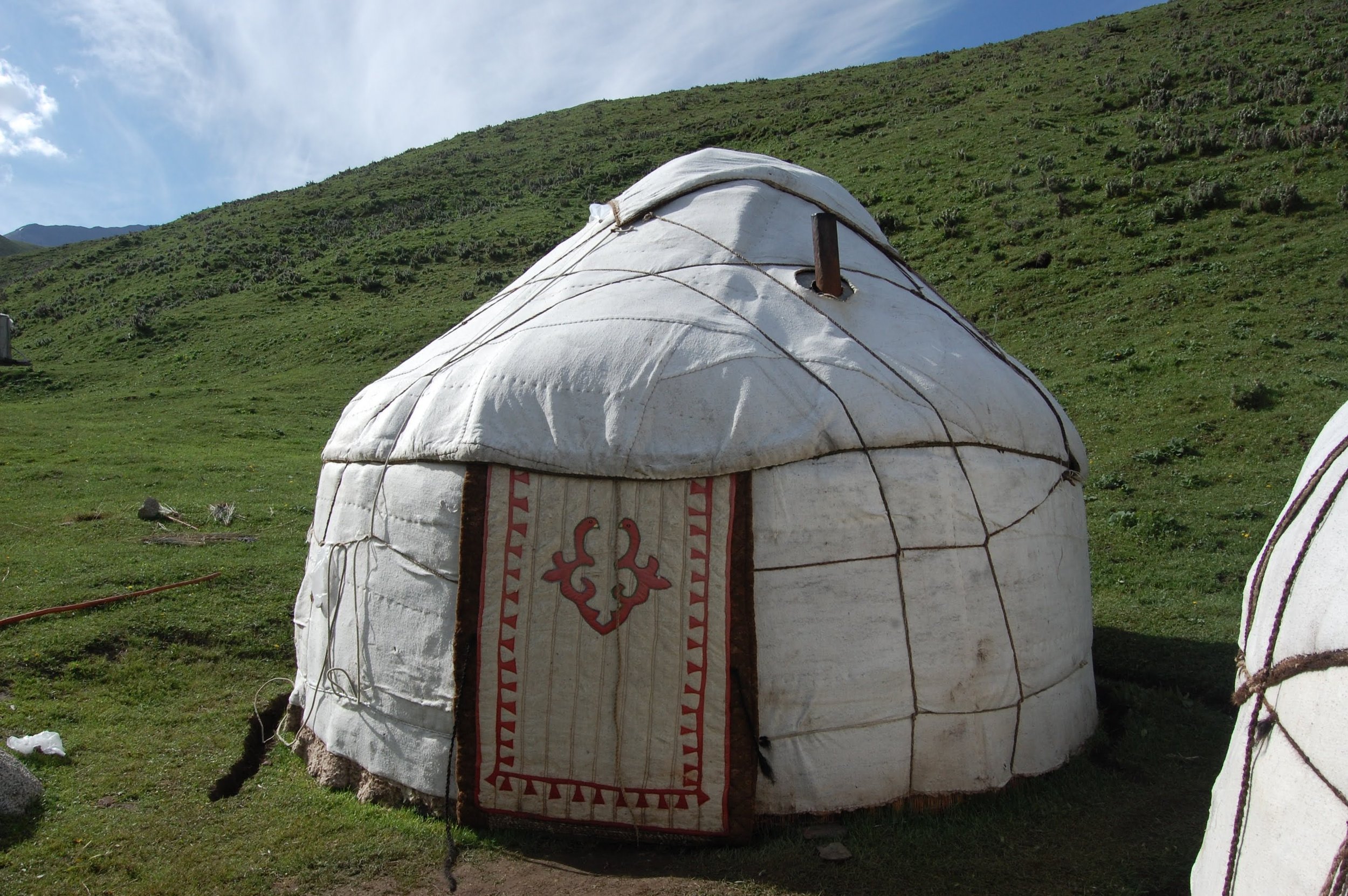
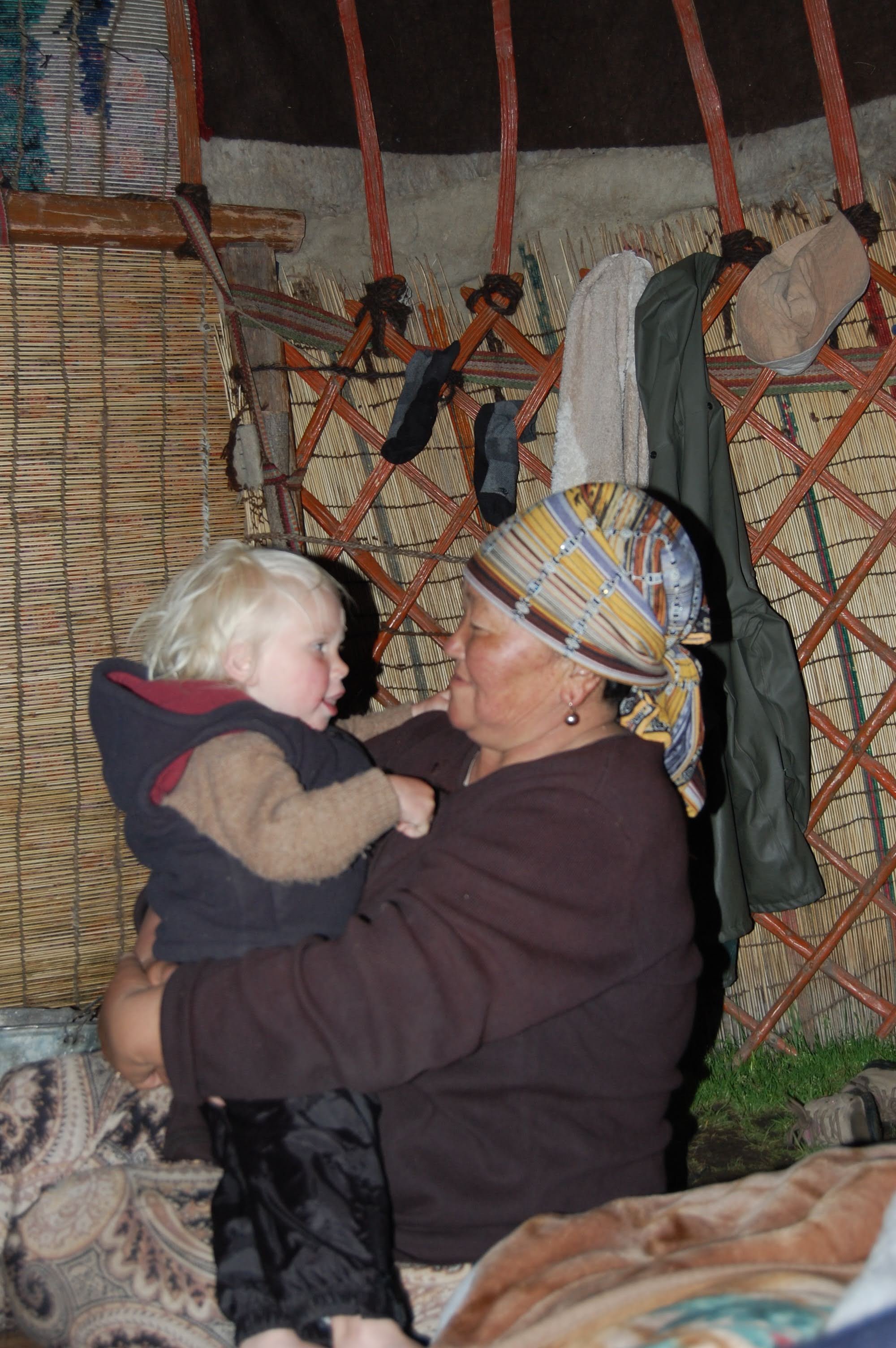


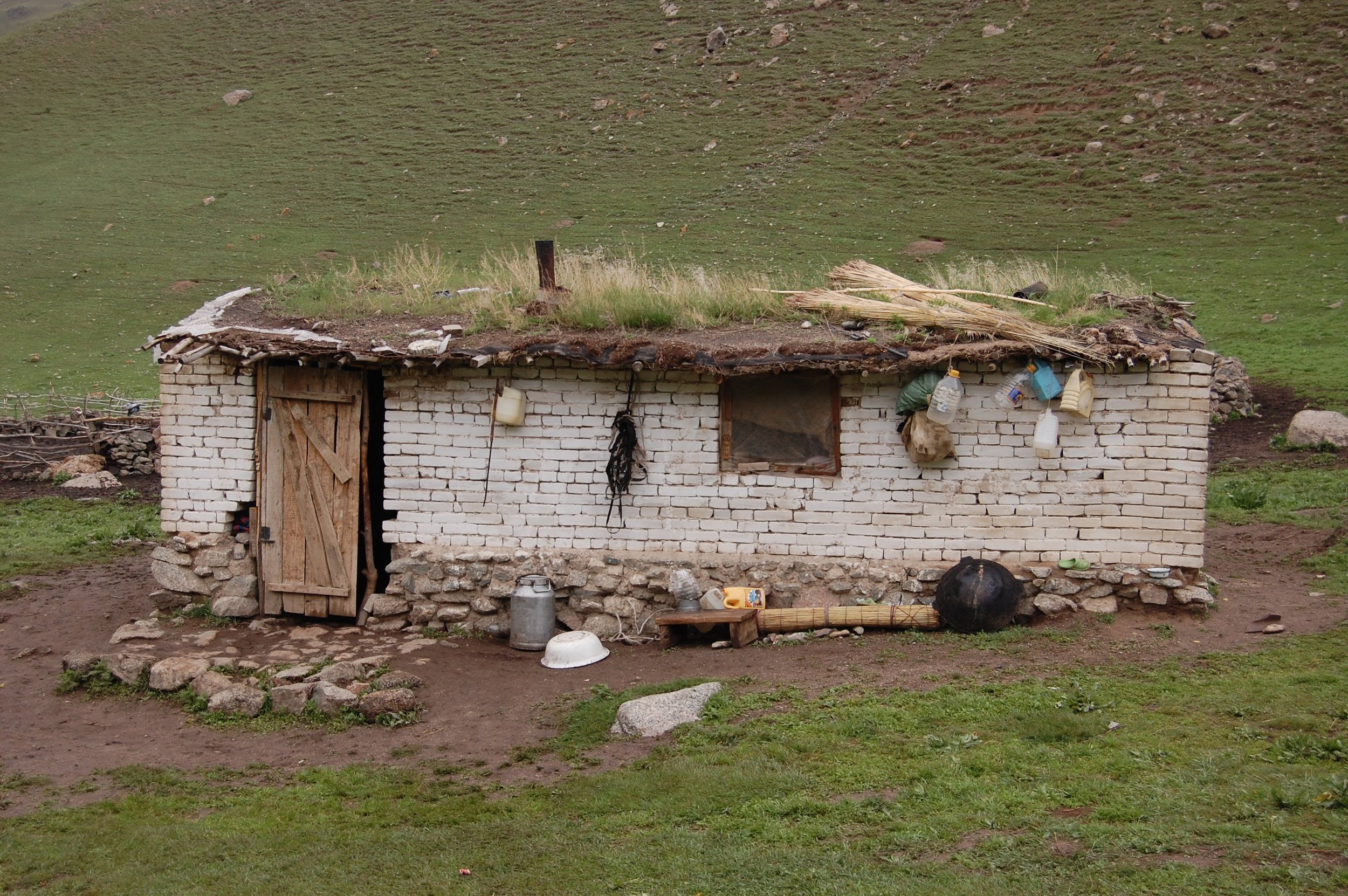
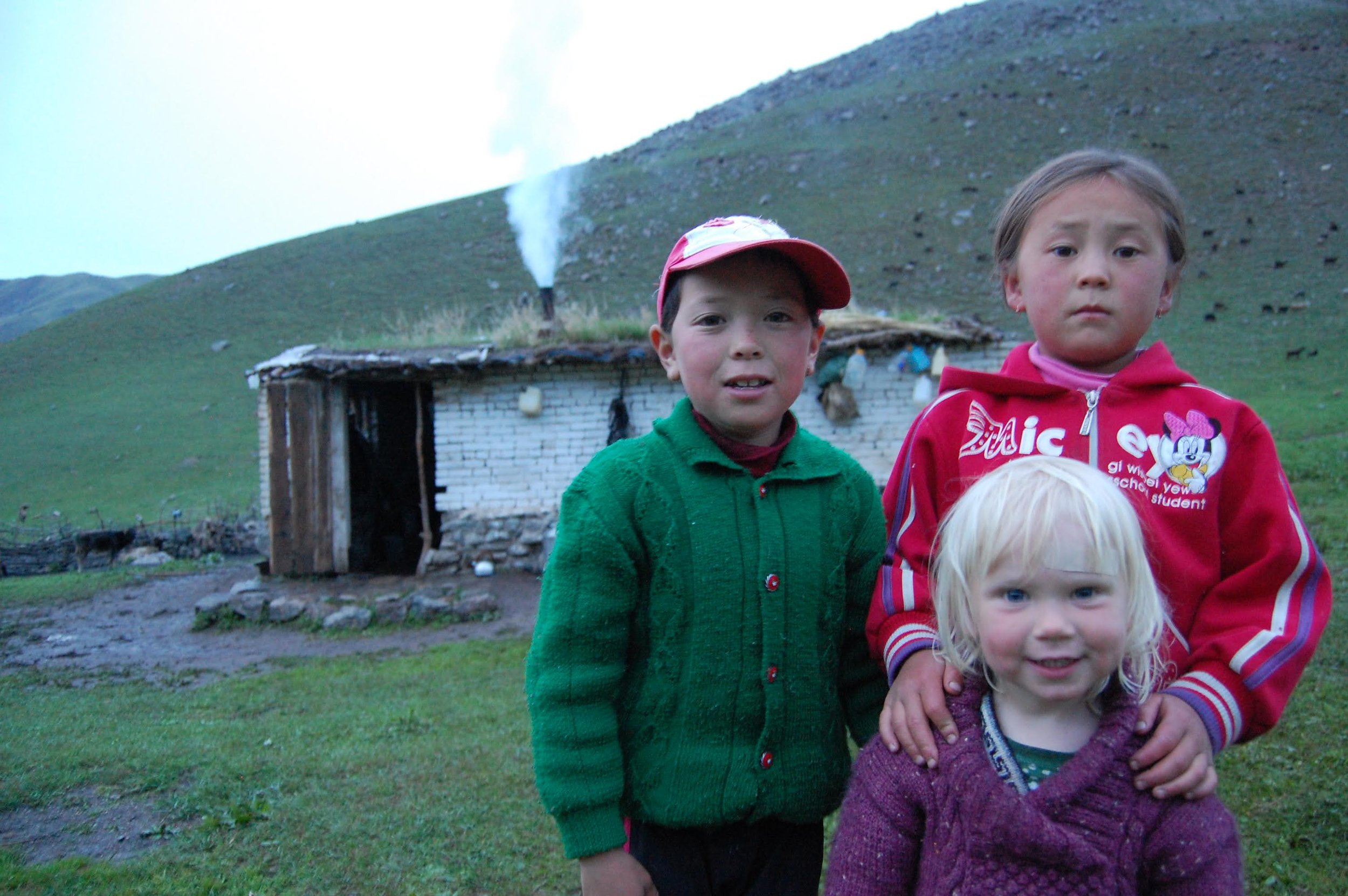
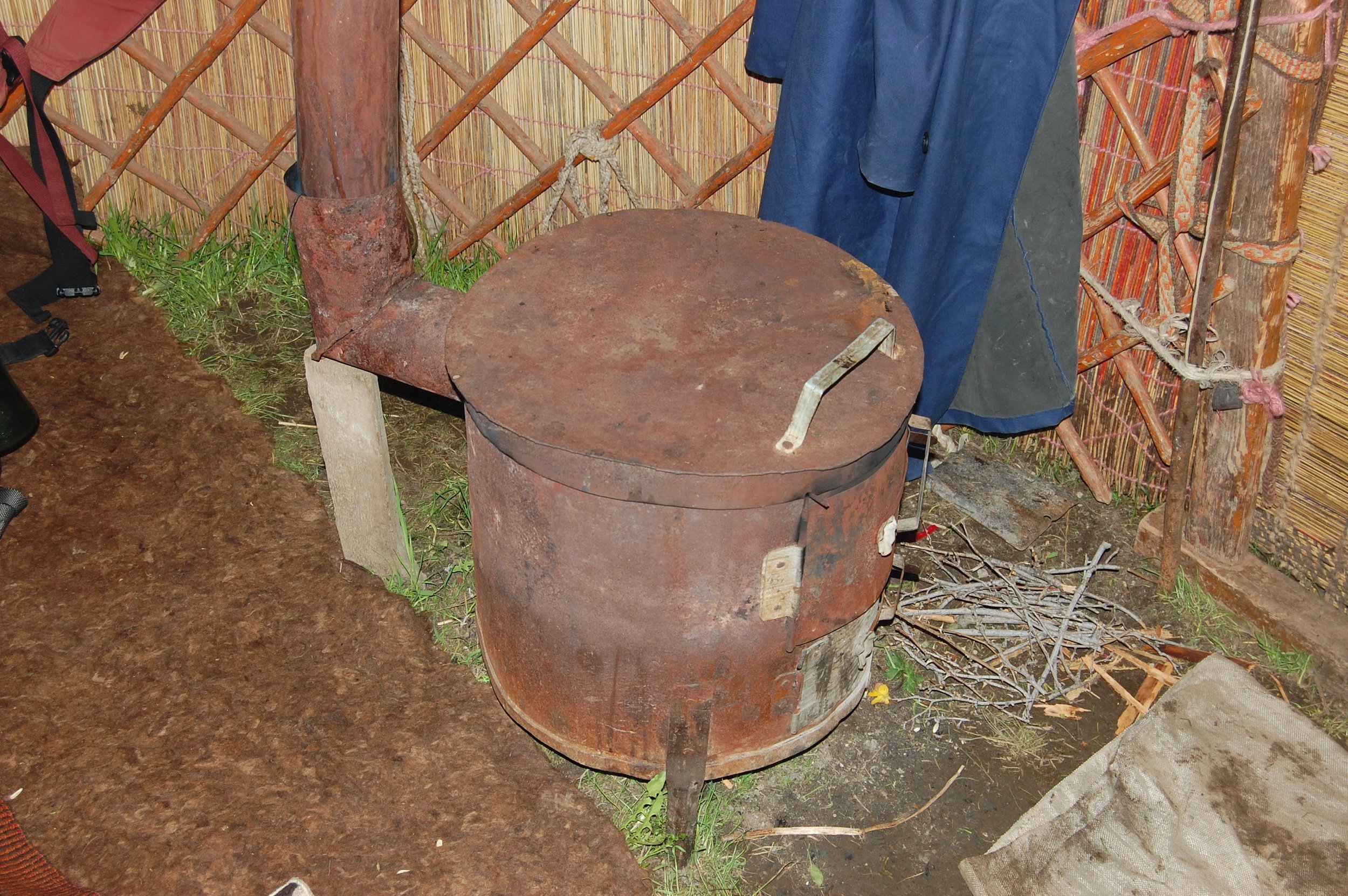
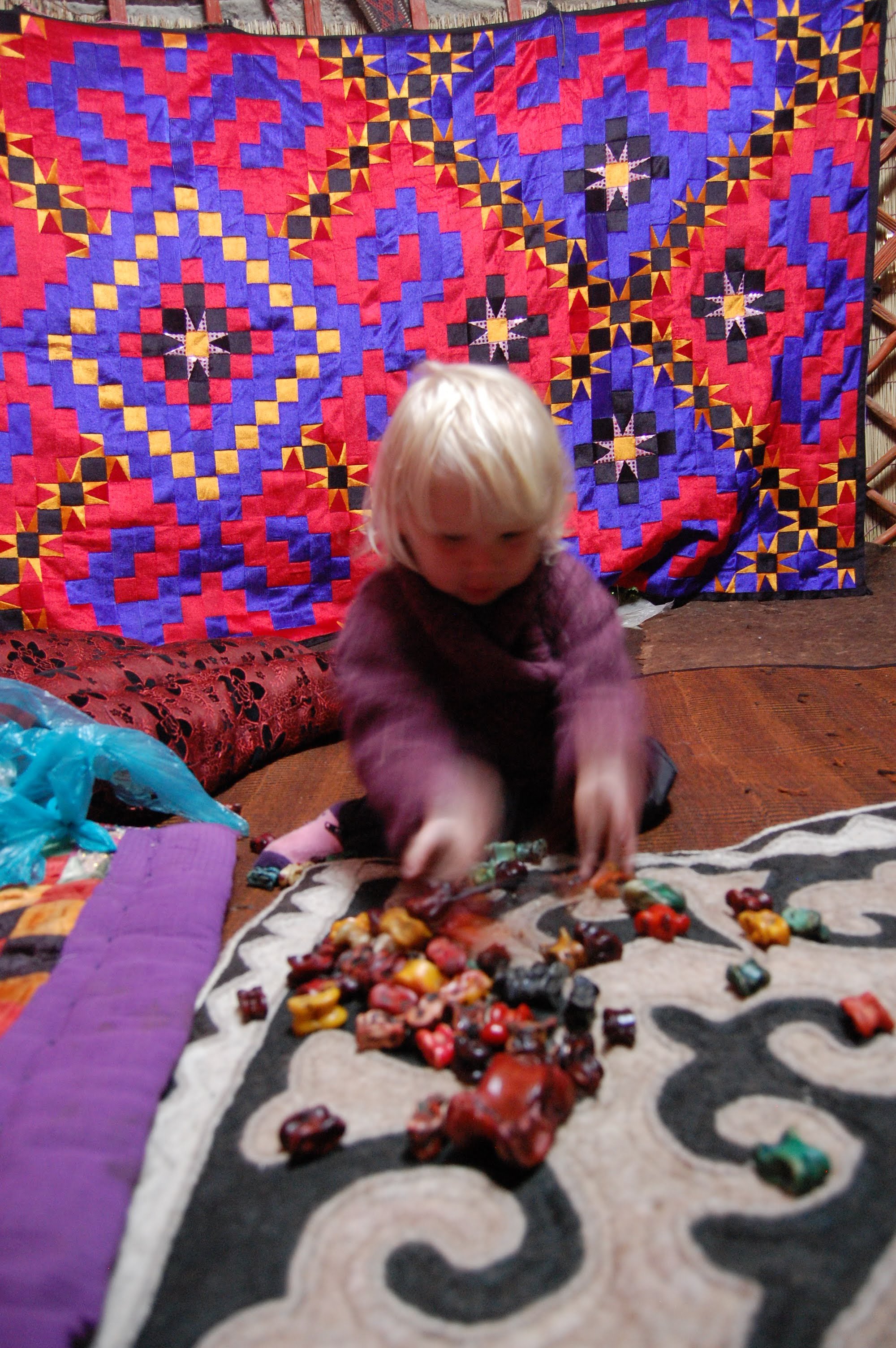
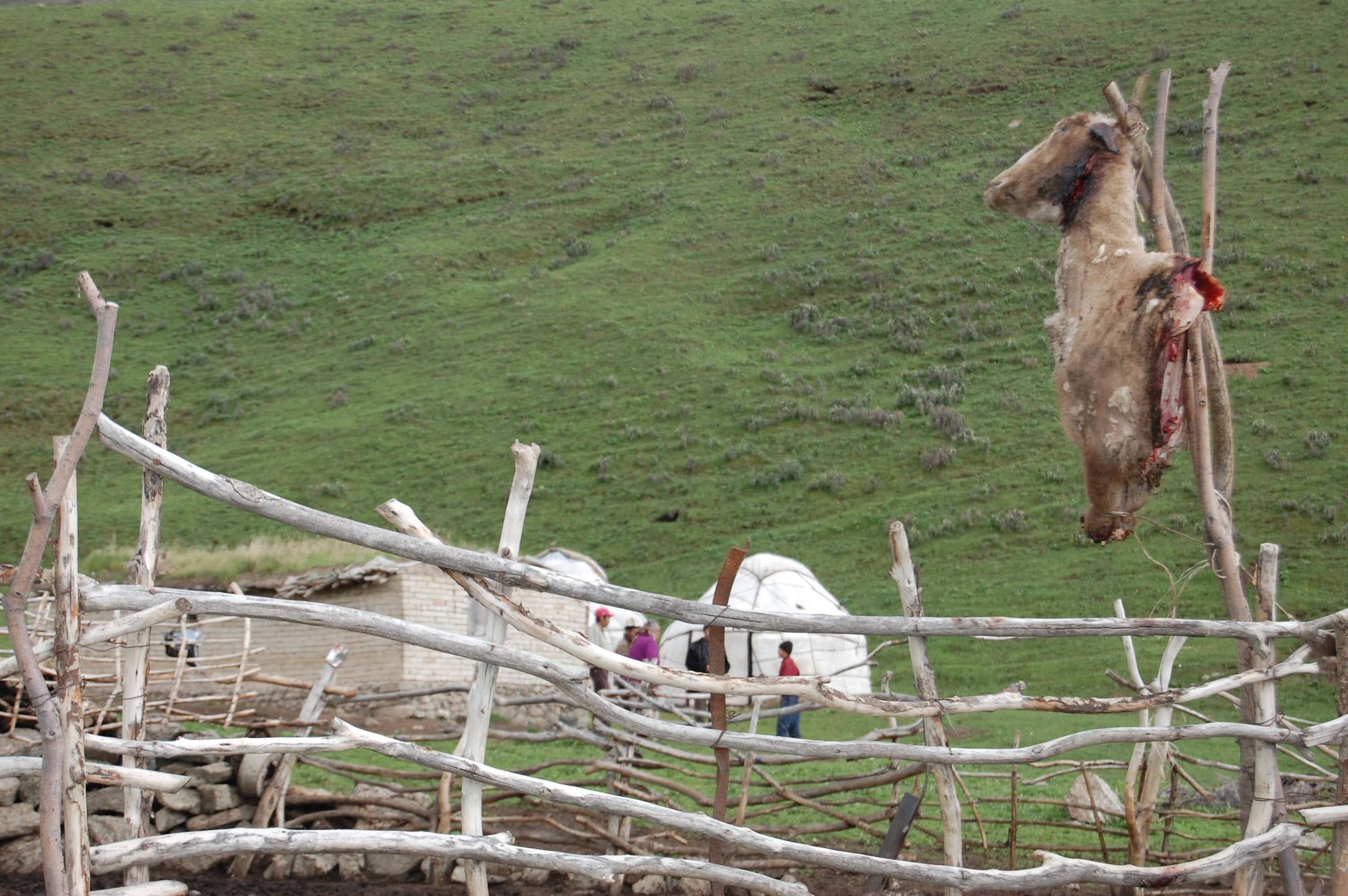
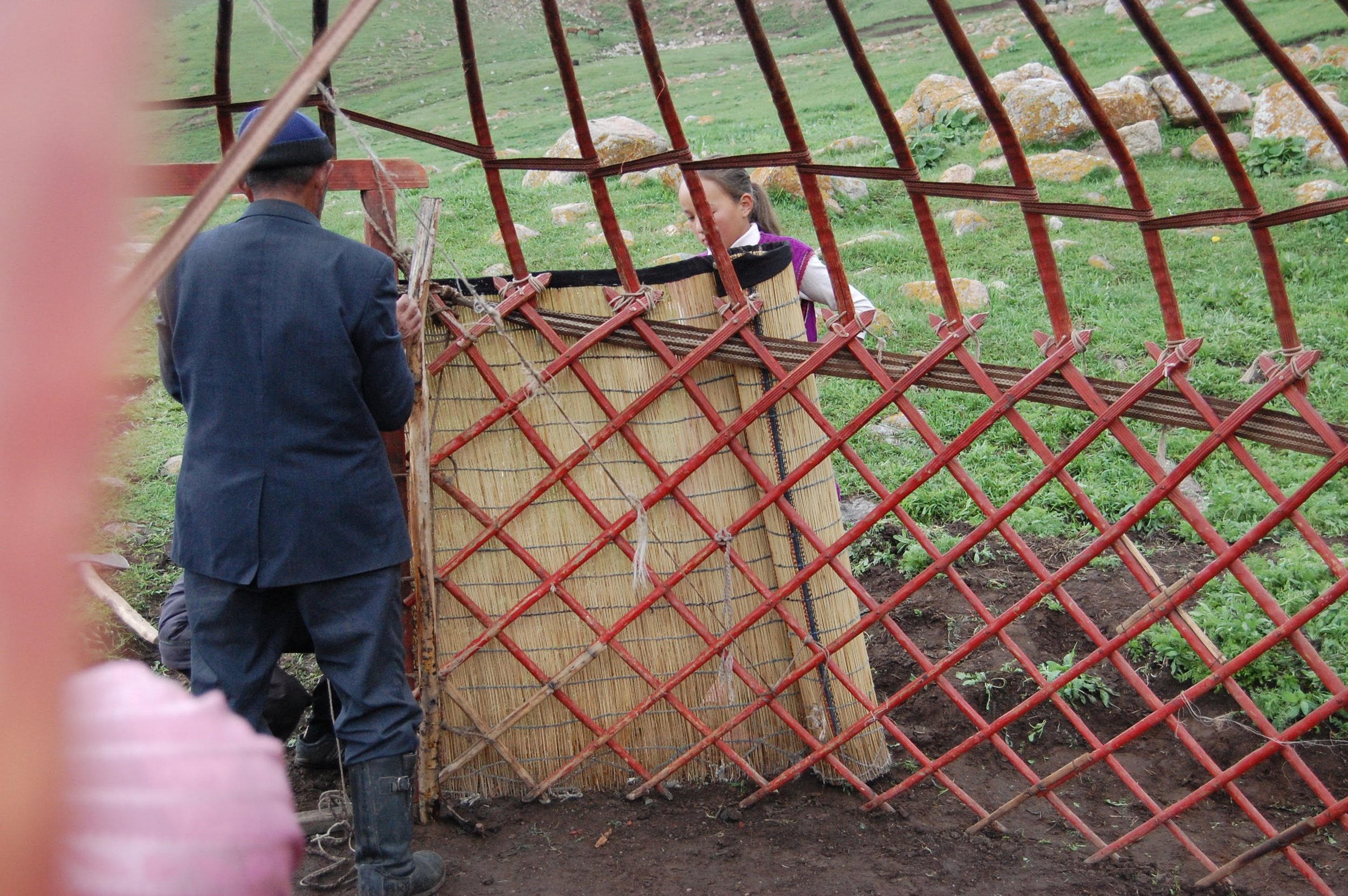
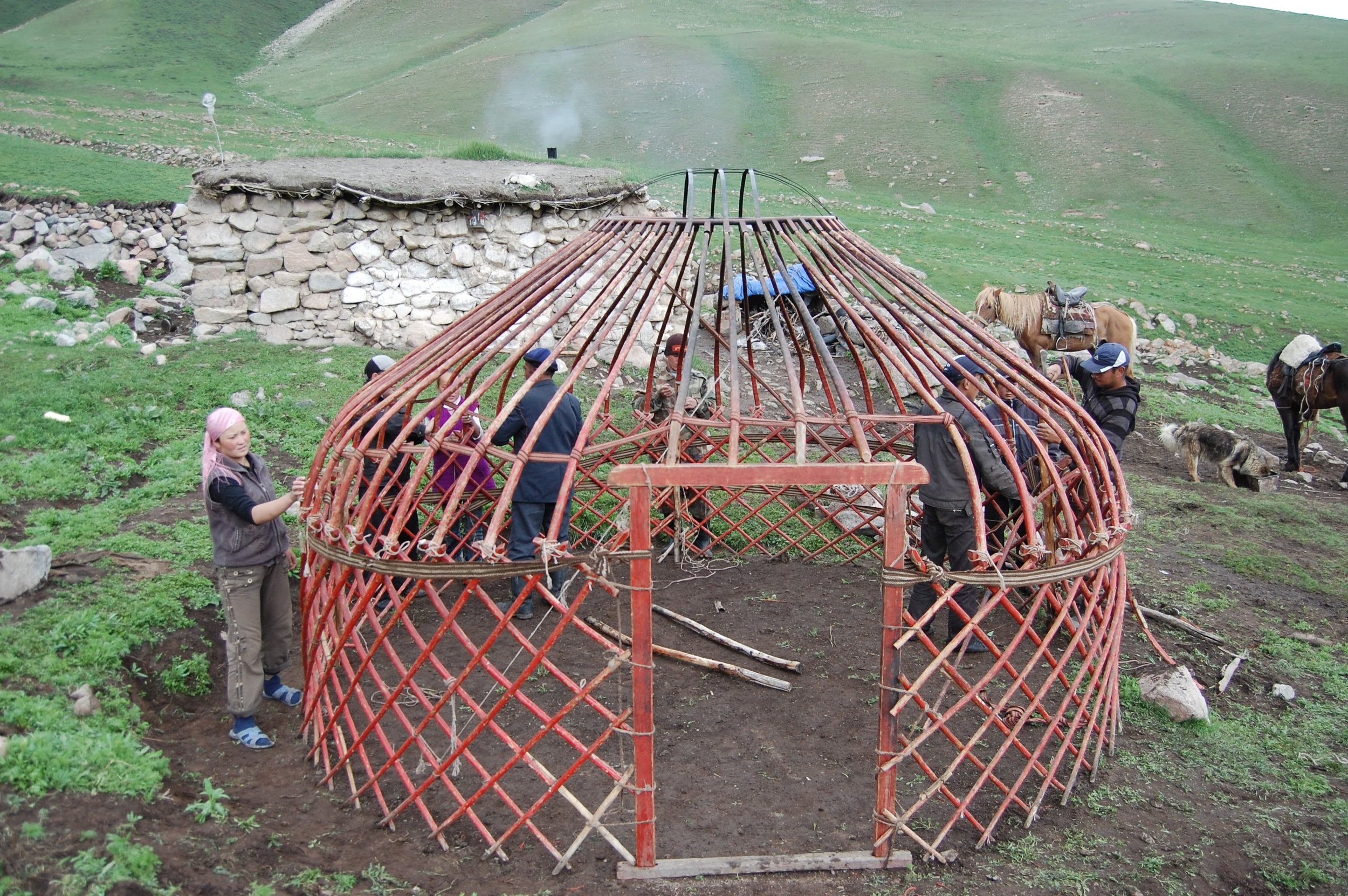

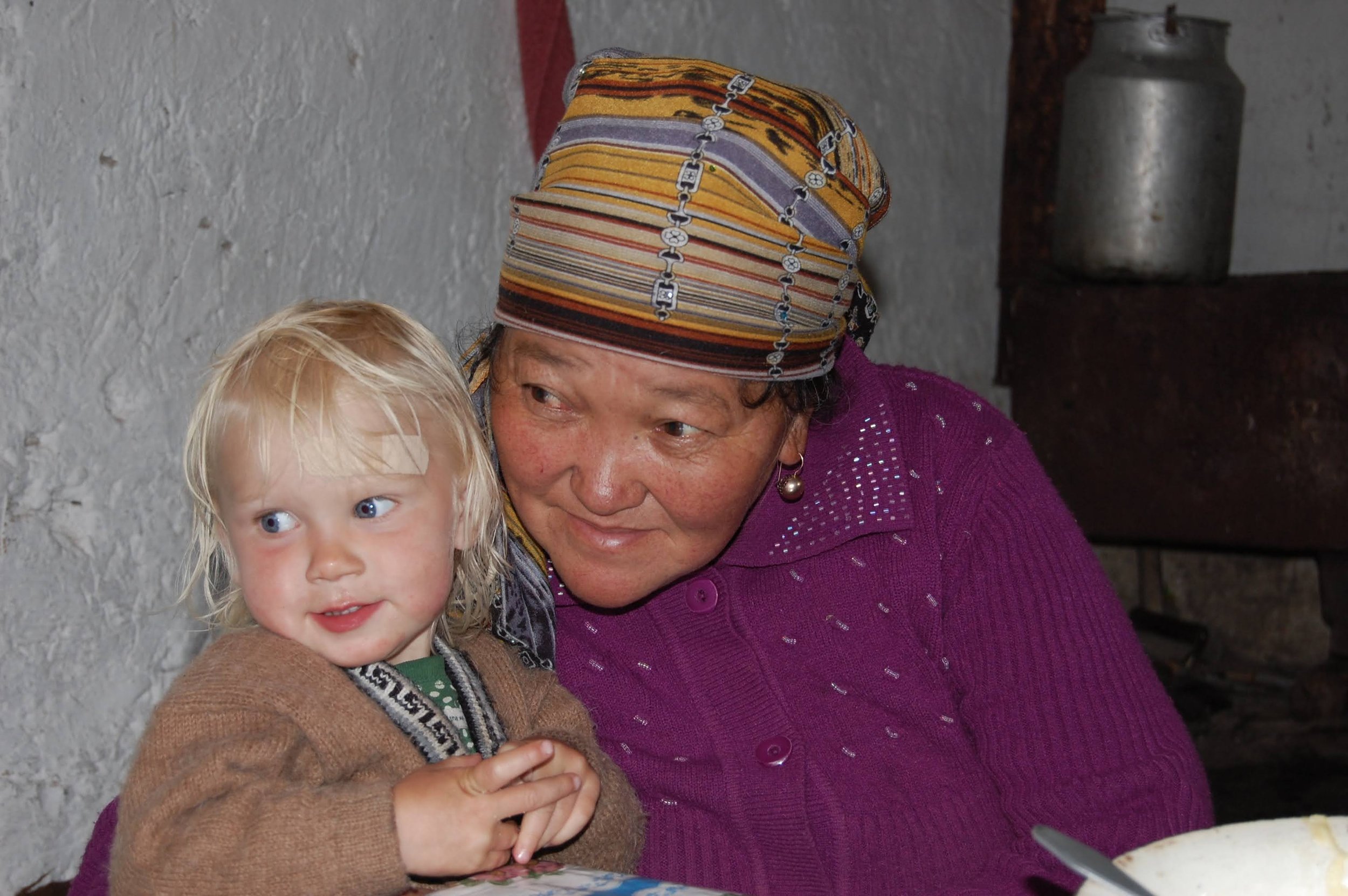
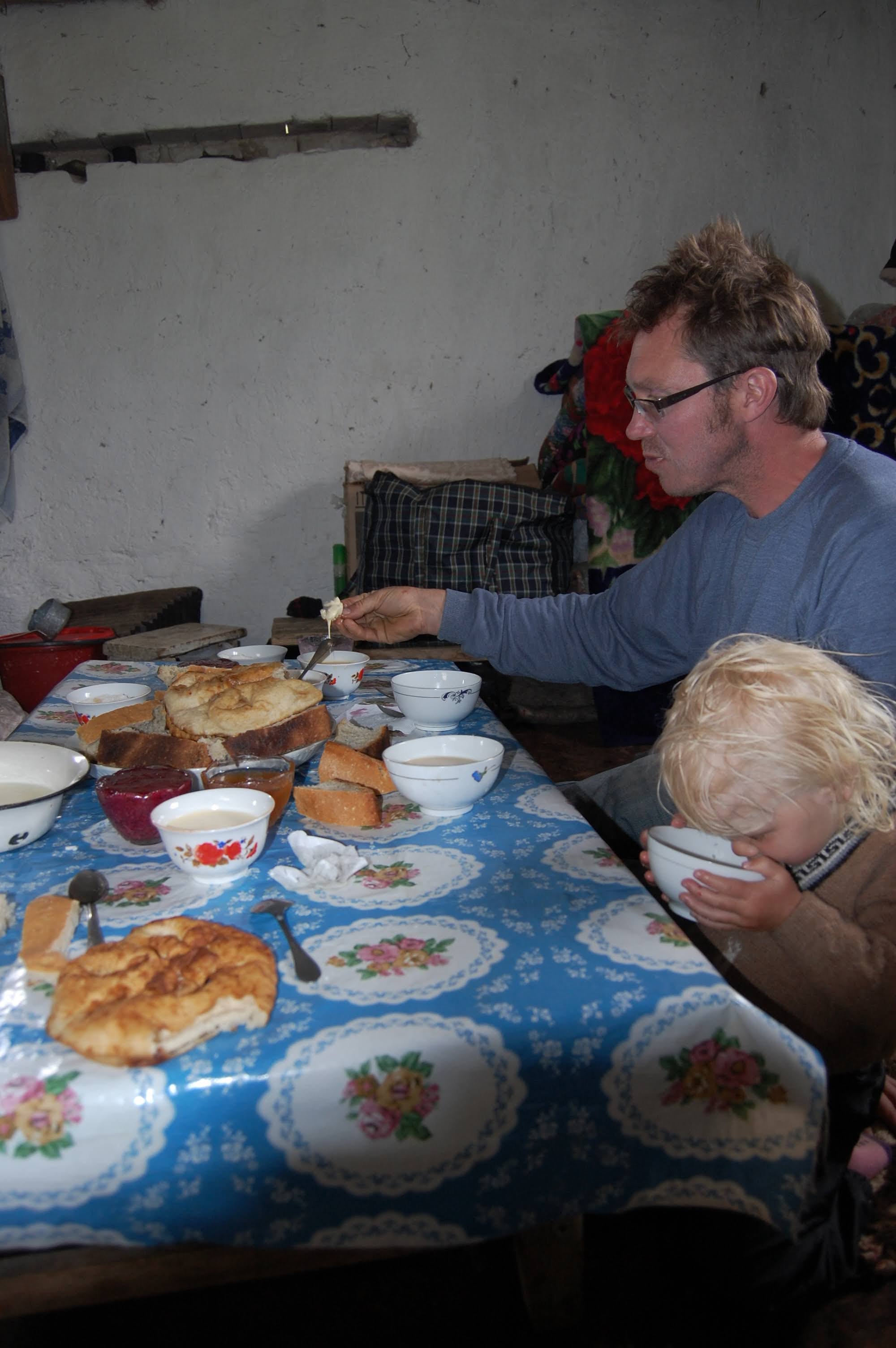
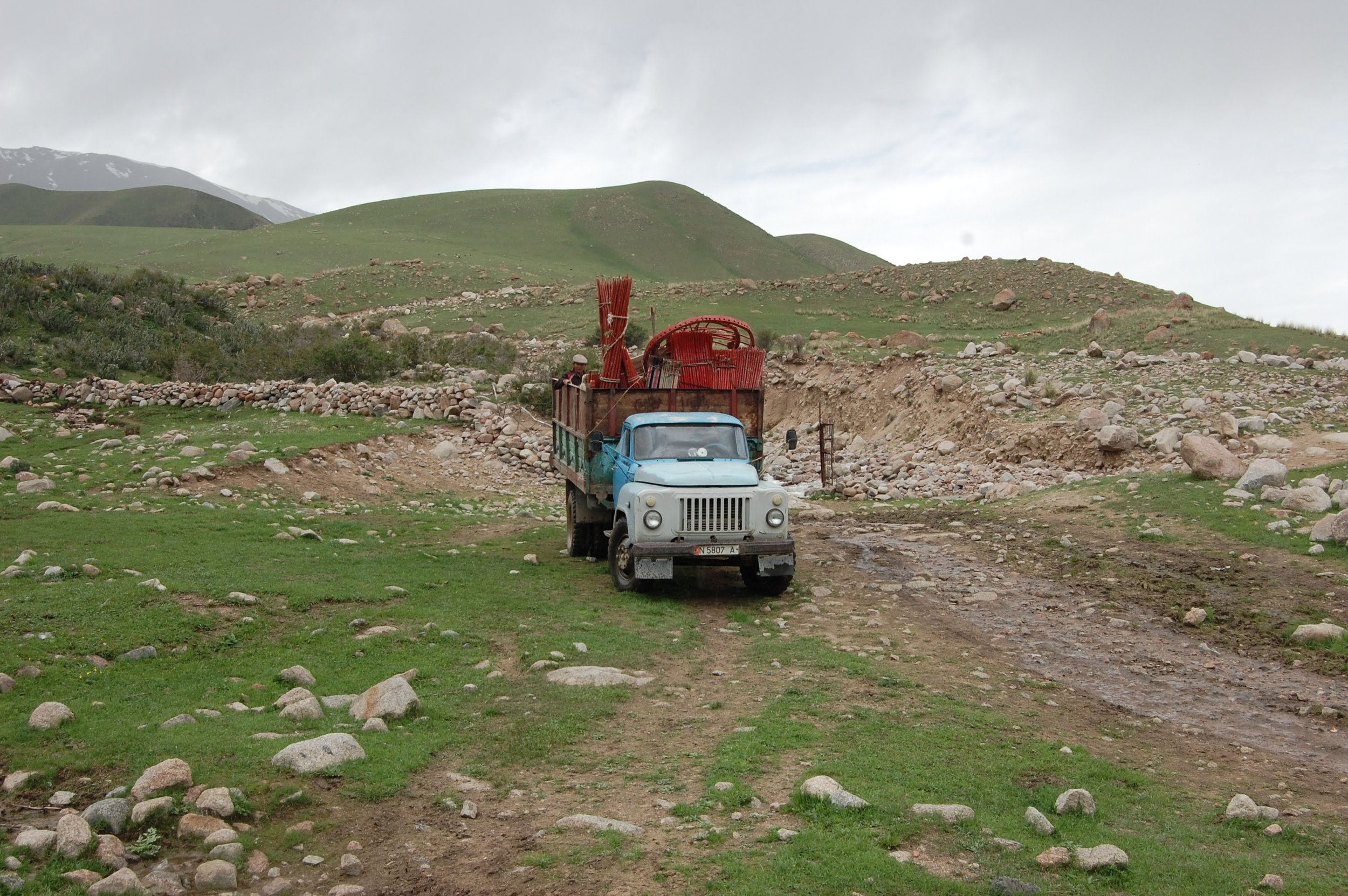
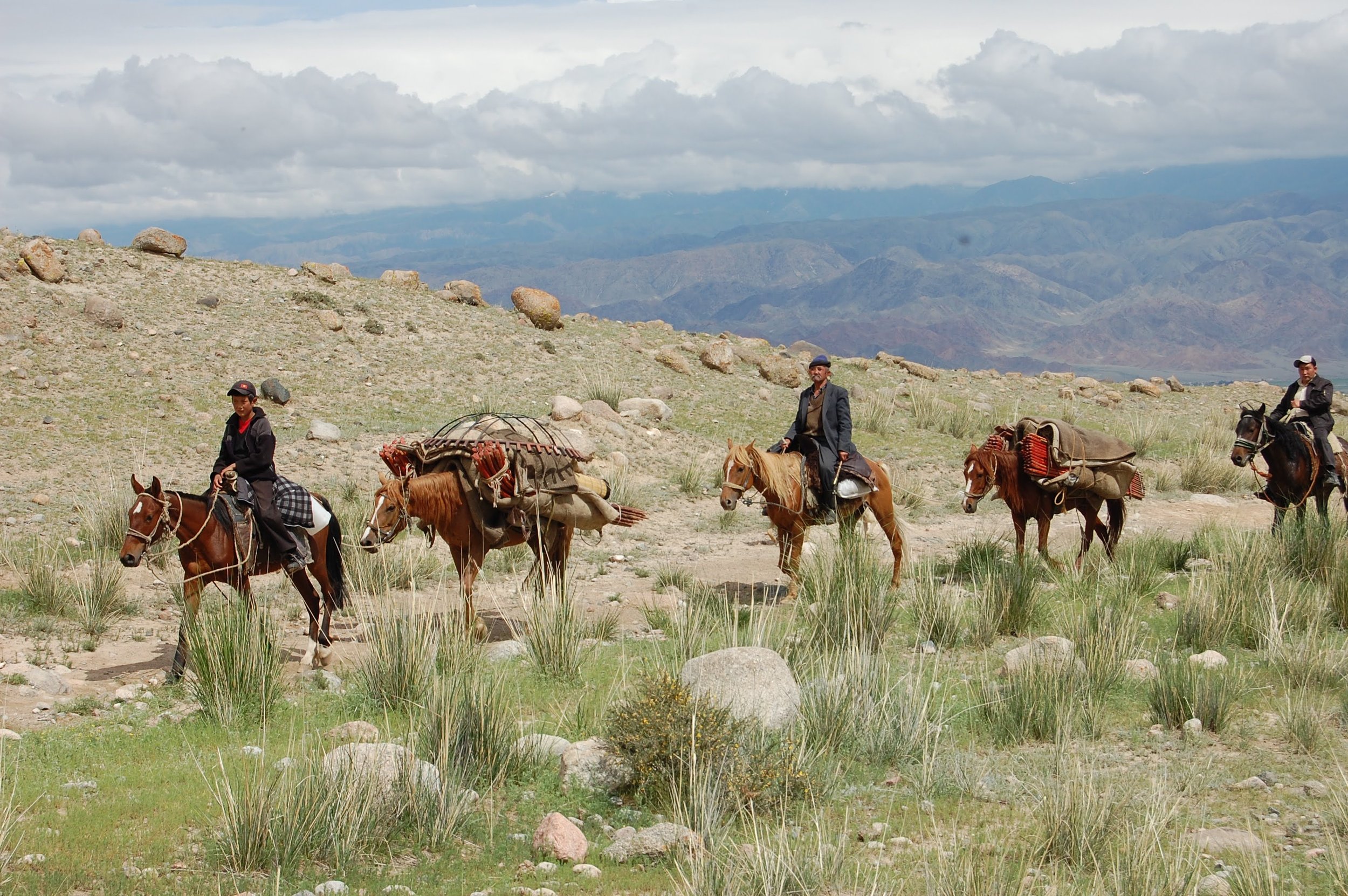
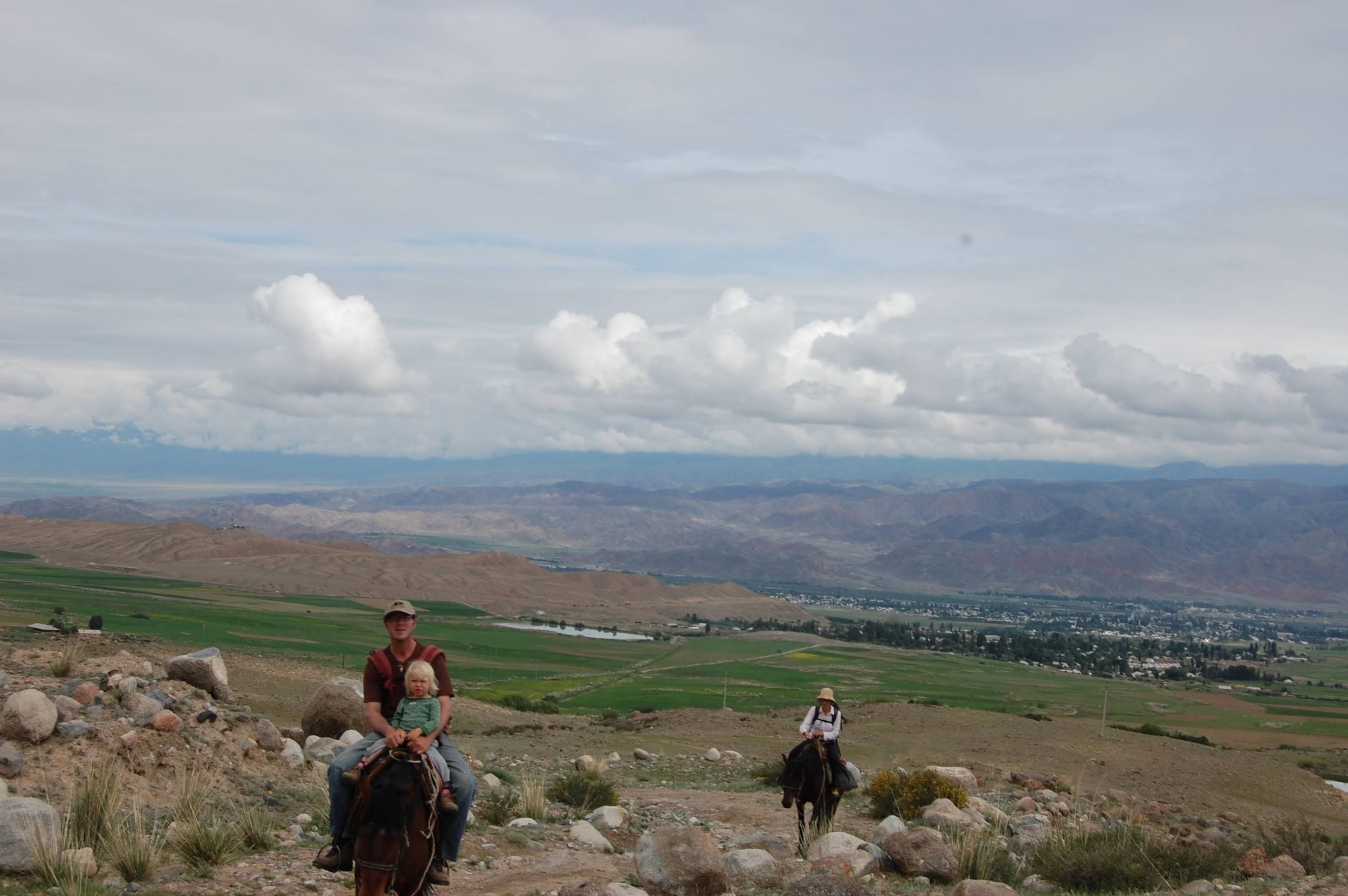
The next day, our guide Inglis and driver picked us up from the house and drove us to a little village called Isakeyev. It was Inglis' second year as a horse guide and although he is only 19 years old he is in his second year of business at the University in Bishkek. We mounted the horses and slowly started to climb in between two steep slopes of the north-eastern Terskei-Ala Too Mountains. We travelled at a slow speed and passed a group of horses packed down with yurts and supplies headed up to find a suitable pasture for the animals. We also saw a large truck piled high with a few yurts and people riding in the back.
After about 3 hours we approached a herd of horses, sheep, cows, a little shack and two yurts. We were greeted by Gulgun, a beautiful and welcoming grandmother who managed the jailoo (high altitude pasture) and tourists who came to stay. A feast of lamb noodle soup and fresh bread with rich thick cream to dip in was waiting for us. Yara and Alex immediately started to eat and sip hot black tea. The wood stove was fueled with dung and nearby a barrel of Kymyz (horse's milk) was fermenting. There were four children; a little boy Yara`s age, two girls about five and an older boy who was about ten years old.
Yara and I had a nap in the yurt and Alex went to explore outside. The colts were always tied up in a row to each other to prevent them from strolling off too far. They are very valuable and well taken care of. He walked a little ways to another camp who had just arrived. Both men and women were setting up two yurts with chij walls and felted panels. The wheel was made of metal, most likely bought from China.
Our yurt was decorated with shyrdaks and had lots of warm blankets. The children came in to show us a game called “chooka”. It consisted of a bag of coloured sheep knee bones which could be played in different ways. You throw four or five bones into the air and the ones that land in the opposite position you then throw into the air and try to pick the others up at the same time. It takes a lot of practice! Or, you can throw a few into the air and try to catch them on the back of your hand. You can also use them as building blocks.
